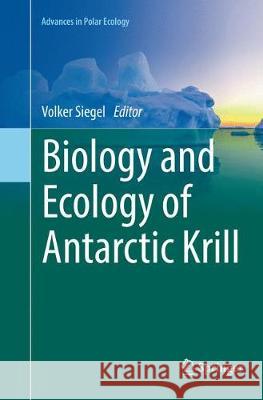Biology and Ecology of Antarctic Krill » książka
topmenu
Biology and Ecology of Antarctic Krill
ISBN-13: 9783319805290 / Angielski / Miękka / 2018 / 441 str.
Kategorie:
Kategorie BISAC:
Wydawca:
Springer
Seria wydawnicza:
Język:
Angielski
ISBN-13:
9783319805290
Rok wydania:
2018
Wydanie:
Softcover Repri
Ilość stron:
441
Oprawa:
Miękka
Wolumenów:
01
Dodatkowe informacje:
Glosariusz/słownik











